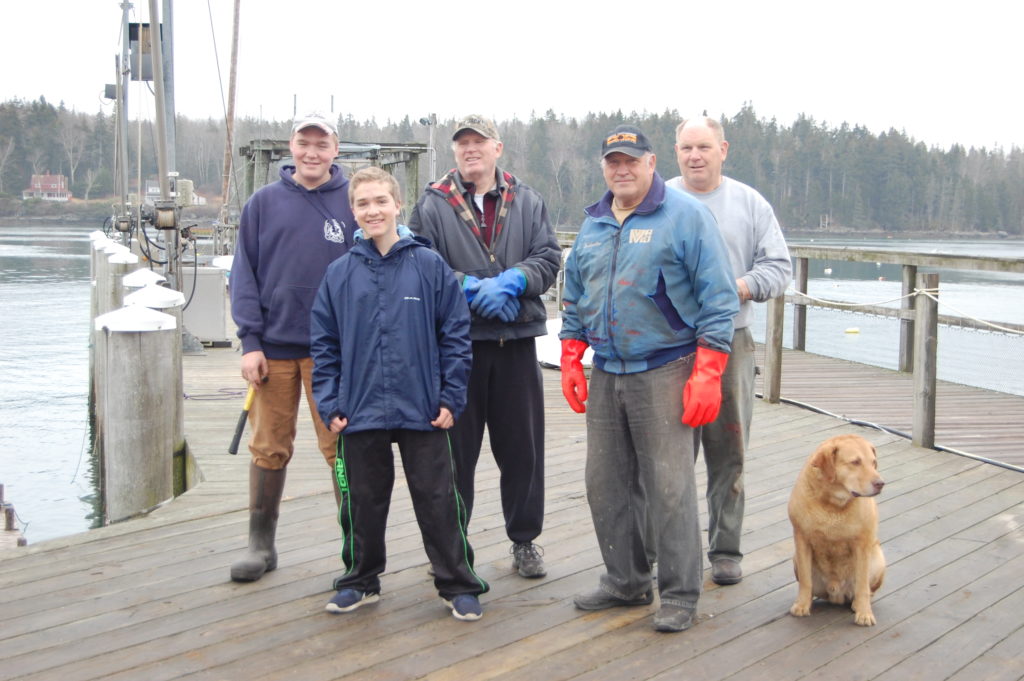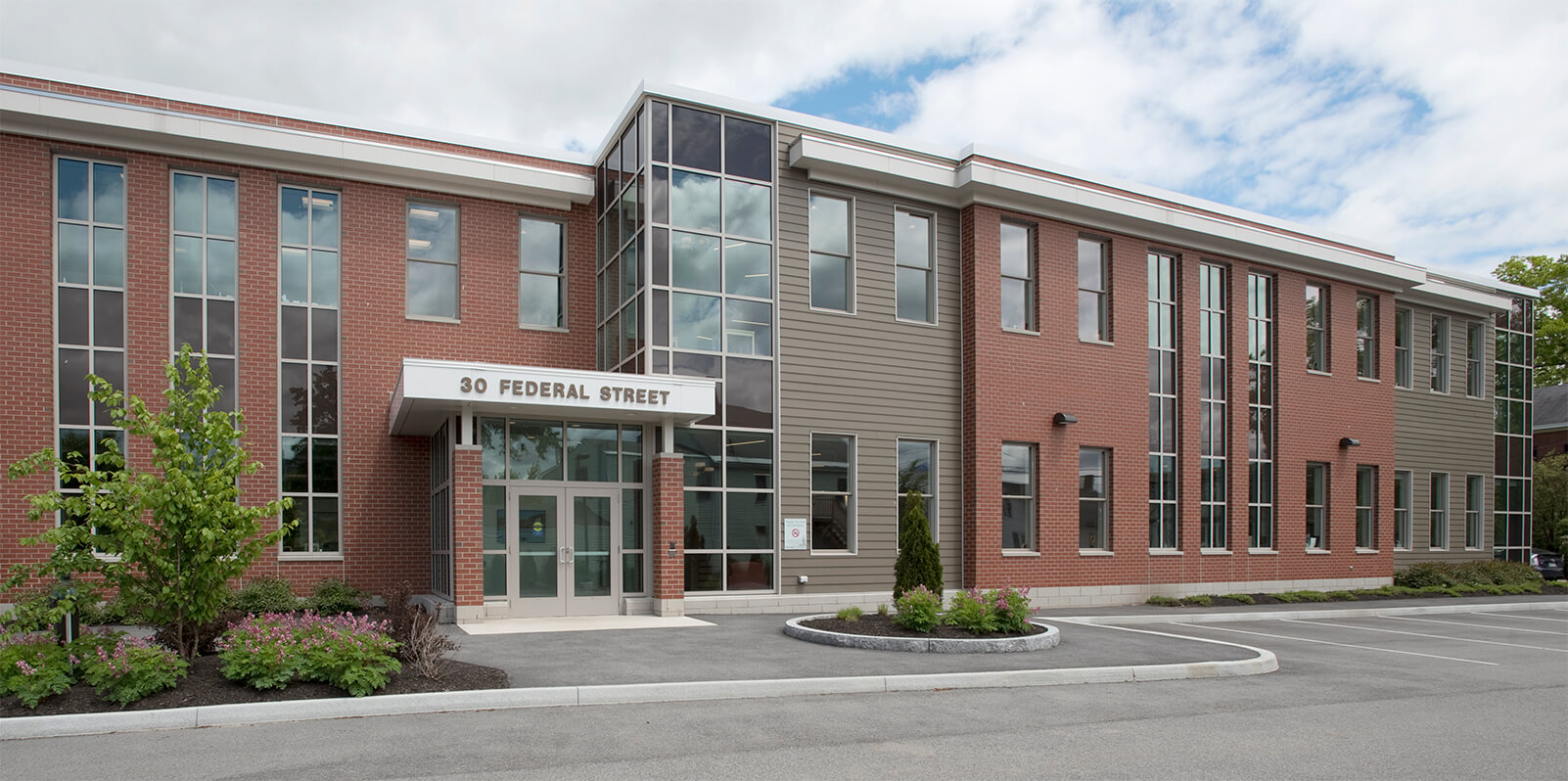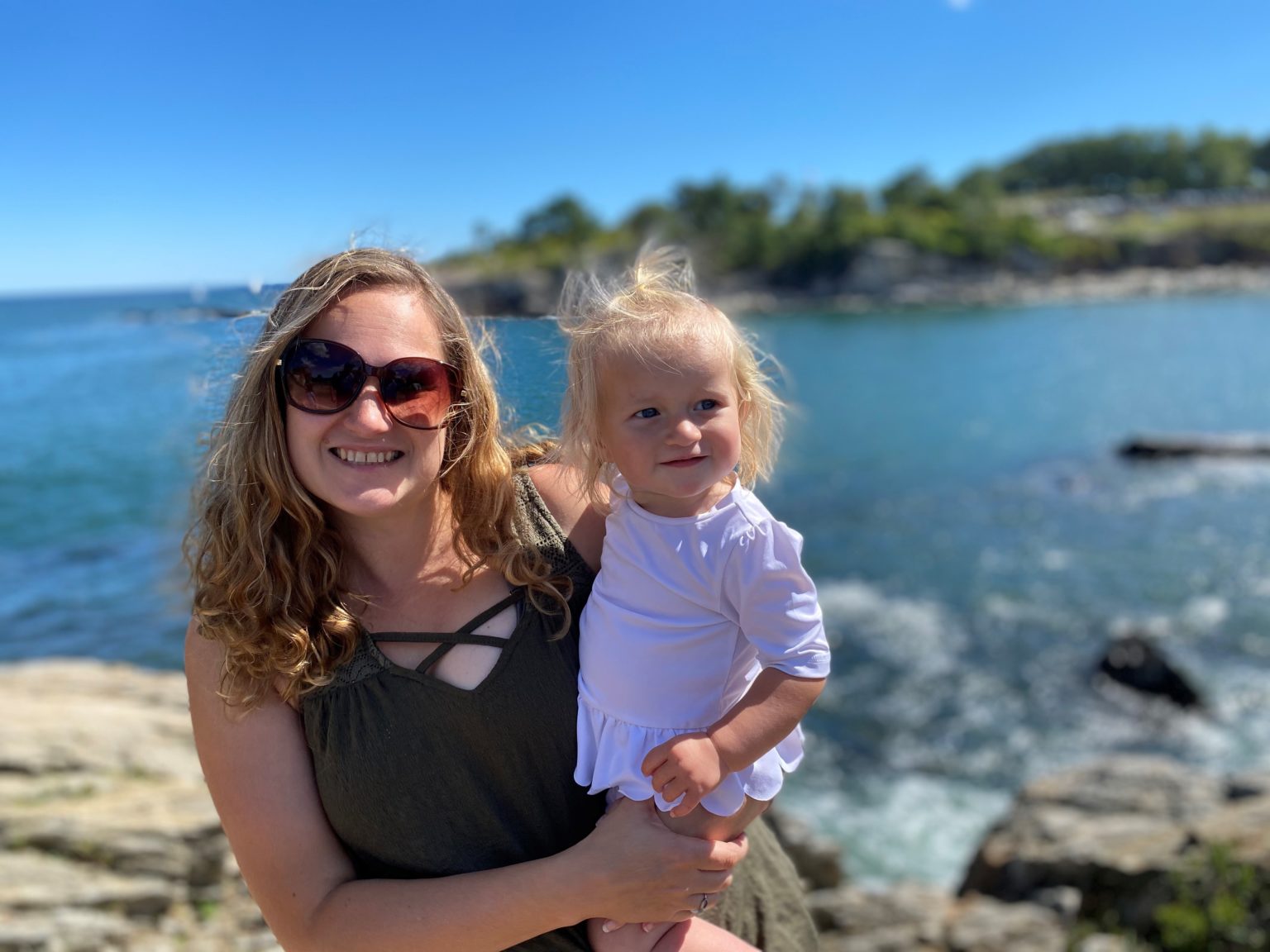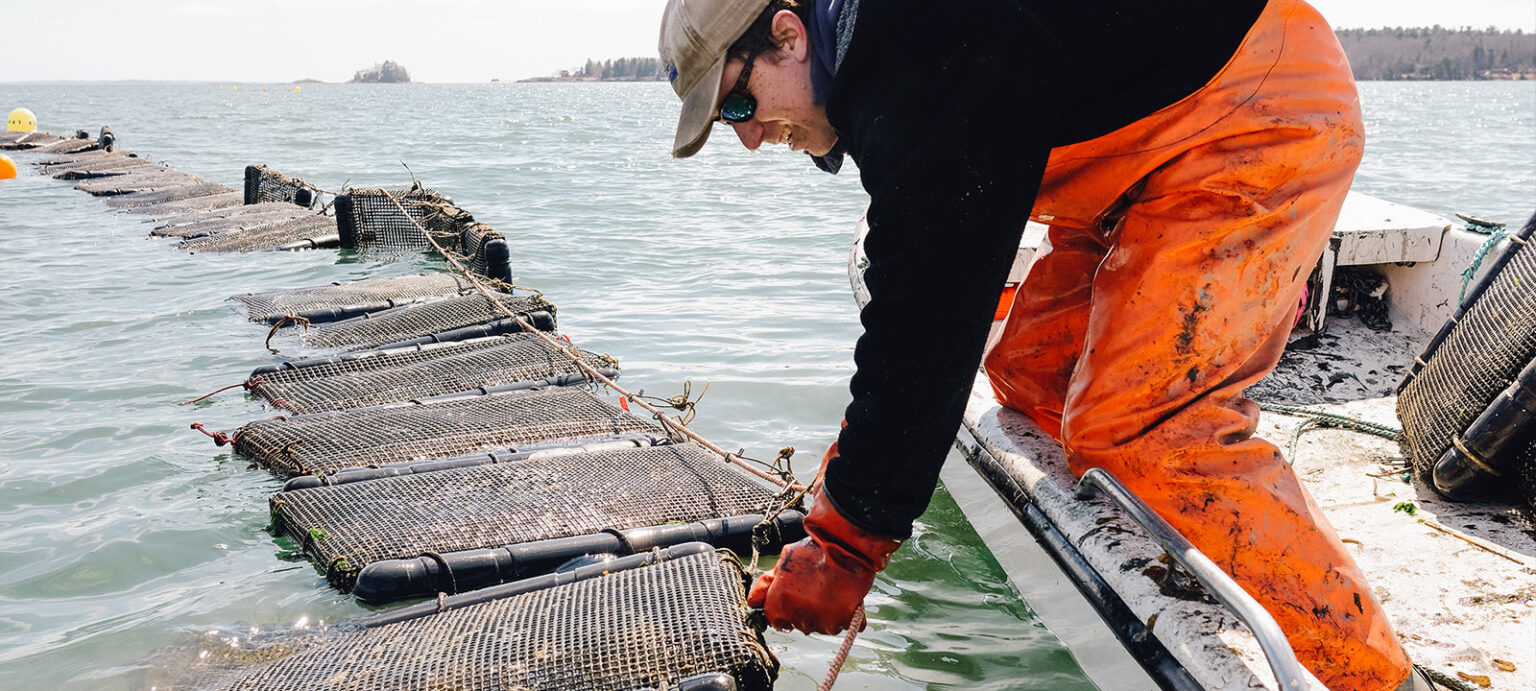April 08, 2016
Family-Owned Wharf in Tenants Harbor Receives Working Waterfront Protection, Provides Commercial Fishing Access
April 8, 2016 — A significant property in Tenants Harbor was today added to the growing list of commercial waterfront properties protected by Maine’s Working Waterfront Access Protection Program, part of Land for Maine’s Future Program. Millers’ Wharf is nestled at the head of Tenants Harbor and owned by four brothers, all of whom are commercial fishermen. The wharf currently serves lobstermen, scallopers, urchin boats and seaweed harvesters. Over the years, landings have included shrimp and ground fish.
With the ink not yet dry on the working waterfront covenant, Hale Miller, who spearheaded the effort to secure the Working Waterfront protection on behalf of his brothers, had returned to his shop where he was readying his seaweed harvester for launching. “With the working waterfront funds, my brothers and I can now be assured that this property will be kept as commercial working waterfront for fishermen in the community as well as generations of Millers who want to continue in the commercial fishing business,” said Miller. “My parents worked hard to keep this property as a working waterfront, now, despite increased pressure along the coast from developers, this property will continue to provide access for commercial fishermen for generations.” Four generations of Millers have fished from the wharf.
Since the four brothers inherited the property from their parents in 2002, they have undertaken considerable improvements to the wharf including dredging to provide access for loading bait and unloading catch regardless of tide and the addition of four hydraulic hoists to increase efficiencies. Millers’ Wharf currently supports over 100 people engaged in commercial fishing activities including lobstermen and sternmen, urchin divers and student license holders.
“Fishing is a big part of the community in this area,” said Victor Cole who fishes off the wharf. “I’ve fished off quite a few wharves over the years and this is one of the best maintained wharves I’ve seen. The fact that it will be here for future commercial use is significant – much of the economy on the peninsula is tied to commercial fishing and that can’t happen without access.”
In exchange for the working waterfront covenant, which ensures the wharf owners cannot develop or use the property for anything other than commercial working waterfront activities, the state will pay $250,000, an amount determined by a standardized working waterfront property appraisal. “Those funds will allow us to increase the operating efficiency of the business on the wharf,” said Miller. “That will bring the operating costs down which will benefit all the fishermen who use the wharf,” Miller noted.

The Working Waterfront Access Protection program is administered by Coastal Enterprises, Inc. (CEI), which provides technical assistance to owners of commercial fishing access properties applying to the Working Waterfront Access Protection Program. “We have worked with the Miller family for over a decade on a variety of projects,” said Dick Clime, Project Developer for CEI. “Having Millers’ wharf preserved as working waterfront is a significant win for this small fishing community. It’s these communities that, when you string them together, make up Maine’s coastal economy and create thousands of jobs.”
The Department of Marine Resources administers the program for the state. “I’ve come to know and admire this family during my time as Commissioner. Their commitment to maintaining this property for commercial access is just another testament to their dedication to this critically important industry,” said Patrick Keliher, DMR Commissioner and Chair of the Land for Maine’s Future Board.
With 25 projects in the program, the protected commercial fishing properties total more than 42 acres and occupy almost 1.5 miles of Maine shorefront. Cumulatively the properties service 940 boats, 1680 fishermen, and provide economic support for at least 1,730 families. Nearly 21.4 million pounds of seafood are landed at the properties annually and are worth about $49.2 million dockside.
“Protecting the working waterfront is critical to our state and coastal economies,” said Josh Miller, a third generation Miller who also is chair of the Lobster Advisory Council. “I learned to fish from my grandfather and my father off this wharf, and now I’m teaching my two young girls the trade. It’s reassuring to know this wharf will always remain an active fishing wharf not only for my girls, but for the community as a whole.”
About Coastal Enterprises, Inc. (CEI)
Coastal Enterprises, Inc. (CEI) is a mission-driven lender and investor specializing in rural economic development in Maine and throughout the U.S. CEI combines financing, advising services and policy leadership to help create economically and environmentally healthy communities in which all people, especially those with low incomes, can reach their full potential.
CEI supports small and medium-sized businesses; natural resource-based industries from the farm, fishery, aquaculture, forestry, renewable energy, and nature-based tourism sectors; and community facility, commercial real estate, and affordable housing development. CEI’s involvement in Maine’s fisheries, aquaculture, and marine trades sectors spans 38 years. In 1977 when the reauthorization of the Magnuson Fishery Conservation and Management Act established a 200-mile fishery conservation zone with Regional Fishery Management Councils, CEI committed to investment in, and outreach to, the industry.
About Land for Maine’s Future
For more than two decades, the Land for Maine’s Future Program has helped citizens protect the character of their towns and open spaces: Maine voters established the Land for Maine’s Future Program to secure public access for recreation, to conserve our most important habitats, to preserve Maine’s farming traditions and to protect the natural infrastructure vital to both our sense of place and our economic future.
The program has protected working farms and forests, ocean access, trails for snowmobiles, hikers, and bikers, and pristine lakes, ponds, and rivers. Since its beginnings in 1987, the Land for Maine’s Future Program has played a critical role in the conservation of some of State’s most special places.



